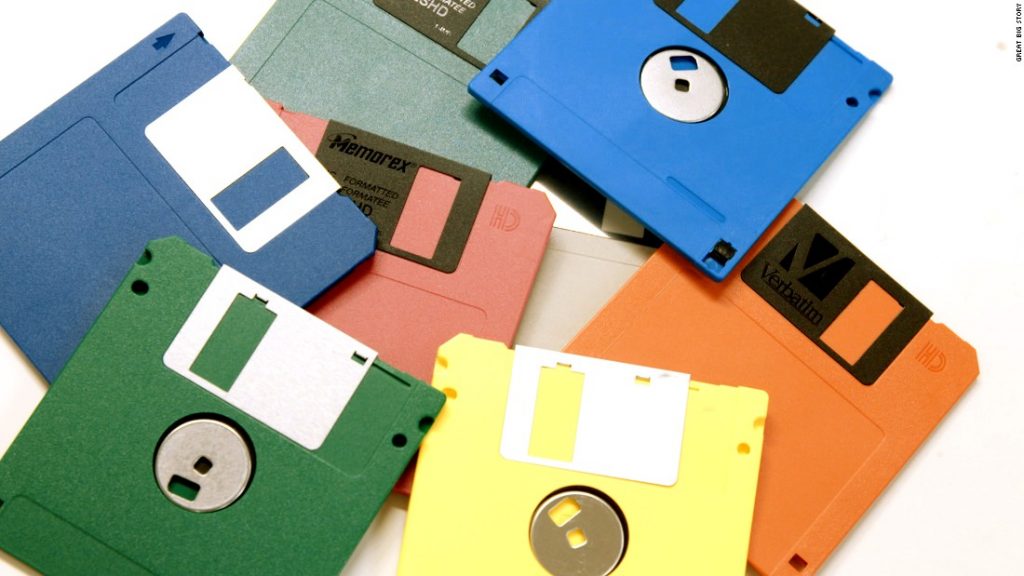It’s hard to believe that a mere 20 years ago, Dell Computers announced that they were phasing out 3.5-inch floppy disk drives from their line of products. The announcement came as no surprise to those who follow technology. The ancient form of data storage was getting a bit long in the tooth. In fact it’s surprising it managed to last the few years into the 21st century. In a time where the average file size had grown to be nearly ten times its equivalent just a few years earlier, the user demanded a more portable means to carry their data around with them. Email was expanding beyond the miniscule population it had enjoyed in the late 90s, to the point where files and compressed folders could be sent across the world in an instant, and the optical disc was currently the king of the portable storage medium. For the poor old 3.5-inch floppy, though, its time had come.
Its history
The 3.5-inch floppy disk, or diskette as it was also known as, was a thin plastic high density storage medium that had a long and illustrious history. Its genealogy can be traced back to the 60s, where the big 8-inch floppy disks were used in laboratories and dedicated computing institutes the world over – although computers then were behemoth structures that filled entire rooms. By the mid-seventies, the smaller and more capable 5.25-inch, or five-and-a-quarter-inch, floppy was available and this managed to reign supreme until the mid to late eighties when the 3.5-inch floppy was first introduced and became the predominant form of portable storage.
The hardened plastic body, often brightly coloured, and the thin aluminium sliding gate protected the magnetic material within. The small sliding tab in one corner provided far better write protection than anything previously, where sticking tape to the side was needed to stop overwriting; and you also got a selection of coloured sticky labels to try and fit in the sectioned area below the sliding gate. They came in 720KB Double Density initially, and later a whopping 1.44MB High Density version. And for the most part they were pretty indestructible, when compared to the previous options available.
The good
The 3.5-inch floppy and Philips screwdriver were the only tools an IT technician ever needed. With a DOS boot disk they could perform complete OS re-installs from images stored on servers, through to virus removal and a myriad of other fix-it solutions. The home user could boot their PC specific to their needs: with a little more High Memory available for a game, with a Soundblaster driver loaded, or even with DriveSpace or networking enabled. Entire games from the cover of magazines could be loaded, and with some carefully placed tissue over the write-protect the floppy could be wiped and used for something else.
The bad
Anyone who worked in a school or college would often be seen with a pair of tweezers trying in vain to carefully remove the broken gate from the internals of the disk drive. Likewise, you would save your dissertation at home, then take it to the uni library only to find that somewhere in between the floppy disk had other ideas and decided to never work again. Dead floppies, however, make for excellent coasters.
Conclusion
Farewell then, dear friend. You saved our bacon on more than one occasion, while at the same time made us swear and toss you across the room. You even managed to make an appearance as the storage solution for an early digital camera. Incredible.
You will be missed, 3.5-inch floppy disks.
- It would take roughly 8738 floppy disks to install Skyrim
- Floppy disks are still used to update ticket printers in some airports
- Some till systems still use floppy disks to store the day’s transactions
- Manufacturing CNC machines still use floppy disks to load up their data
- Cash machines, apparently, still come with floppy disk drives installed
- Nuclear weapons silos still run computers that use floppy disks (scary thought)
- The Social Security of Panama still require all submitted health care records to be on a floppy
- The National Milk Records still provide data on Floppy Disk for the InterHerd cattle monitoring program


